The Bubble Teeters
Is the stock market bubble about to burst?
It has seemed that way a few times over the past year, but so far each selloff has proved to be a blip on a relentless climb upwards.
But now we’re starting to see signs of weakness in the sector that’s driving markets higher: AI/tech.
Investors are beginning to digest that there’s simply not enough electricity in America to support endless new data center construction. And all the debt being raised by “hyperscalers” like Oracle and Meta is causing skeptics to question whether ROI will ever materialize.
OpenAI’s co-founder/CEO Sam Altman raised eyebrows back on November 2nd when he seemingly had no answer about how he planned to spend $1.4 trillion on infrastructure with around $20 billion in annual revenue (and huge losses).
Could this be the beginning stages of a crash? Sure. Alternatively, could it be another bear trap, like we saw in March/April? Also yes.
Today we’re going to survey the latest market action, take a worrying look at the health of the American economy, and review ways to hedge for a crash (without necessarily shorting).
High-Flyers Falter
The Magnificent 7 (Apple, Amazon, NVIDIA, Alphabet/Google, Meta, Tesla, Microsoft) are down around 10% from the highs, on average. A fairly typical correction so far.
But second-tier AI/tech plays are taking larger hits. These stocks were red hot just a few months ago:
- AI data center company Coreweave (CRWV) has fallen from a high of $187 to $79
- Cloud firm Oracle (ORCL) has fallen from $345 to $225
- Quantum computing stocks (IONQ, QBTS, QUBT, RGTS) are all down 50%+ from highs (after an incredible run this year)
The most speculative sectors of the market have taken a beating over the past few weeks.
Whether this drawdown is the start of a crash, or a simple correction remains to be seen.
I’m not buying the dip in U.S. tech or broad markets, nor do I plan to anytime soon. But I’m not shorting it in size either. This week I bought a few puts, but they’re very small for now. Just testing the water with some hedges. Eventually the time may come for a more substantial short position, but we’re not there yet. The risk of a “blow-off top” before the bubble pops is still there.
My plan hasn’t changed. I’m heavily positioned in precious metals, miners, hard assets, and select emerging markets. With some cash on hand to take advantage of any market dislocations.
People are Struggling
One of the most concerning signals is seeing the real American economy barely treading water, despite record stock market strength.
First up, layoffs are spiking:
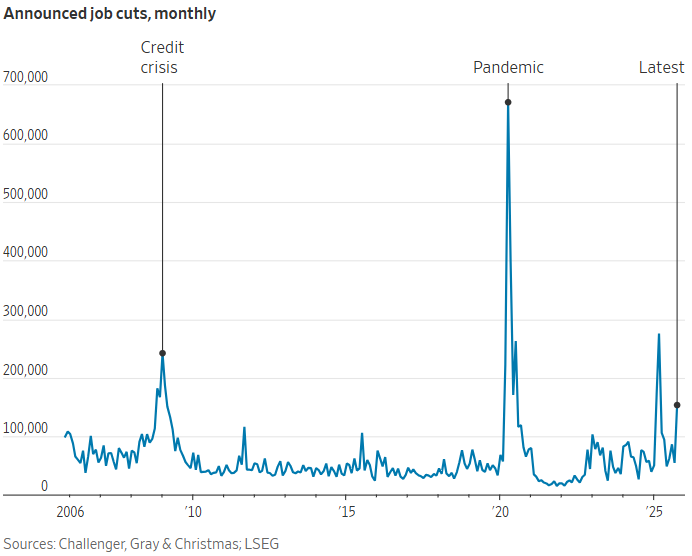
Source: Charlie Bilello
We’re not at 2008 or 2020 levels yet, but the recent pace of layoff announcements is disturbing.
And the most recent consumer sentiment survey out of the University of Michigan is hideous. It’s at the second-lowest level in the survey’s history going back to 1952.
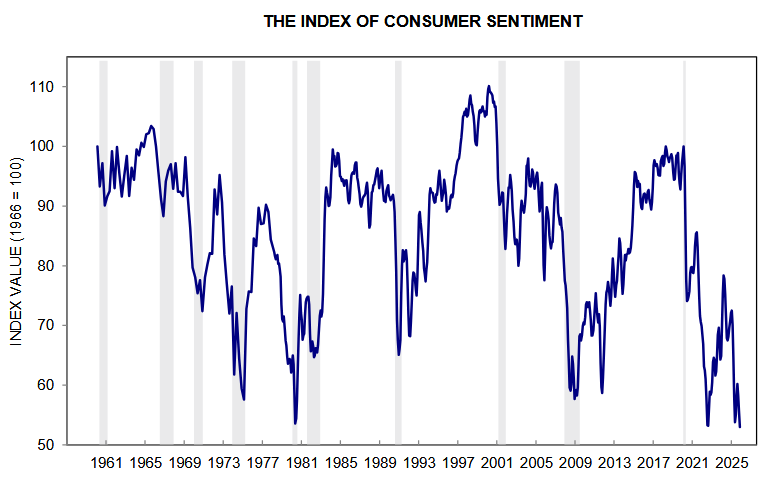
Source: UMich
Consumers are burnt out. Inflation and a weak job market have taken their toll. And if sentiment is this bad during a bubble, what happens if we get a crash and recession? It’s unusual to see sentiment so low with stocks so high.
Another sign that all is not well is the fact that the median U.S. homebuyer is now 59 years old. In 1980, that number was 31.
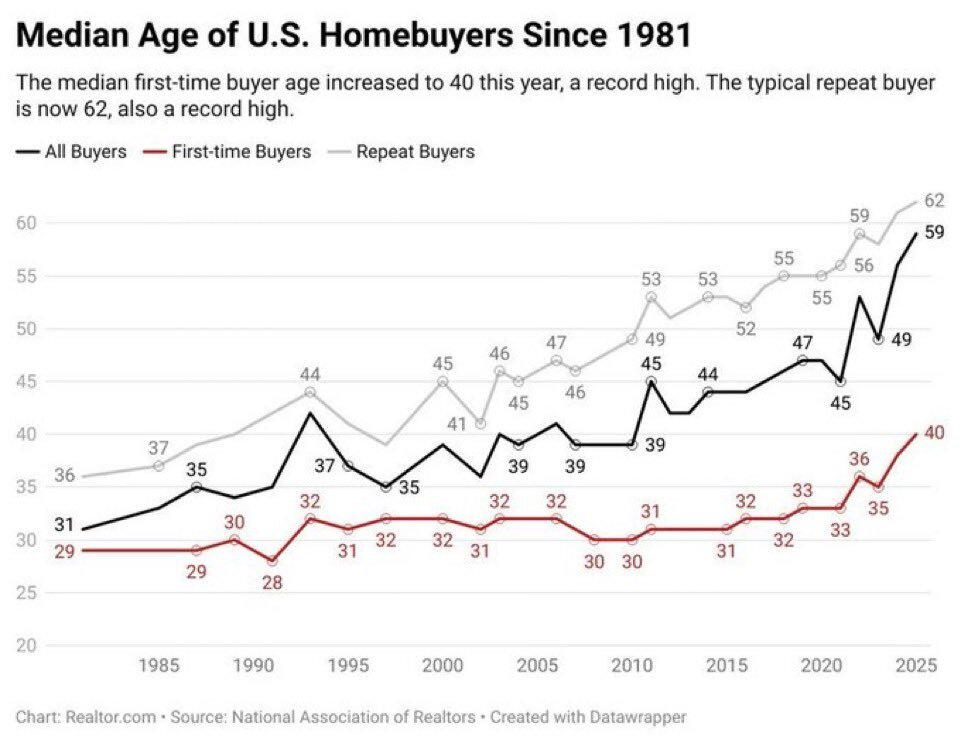
Young people are priced out of the housing market. And as the chart below shows, this is having devastating effects on the percentage of 30-year-olds who are both married and homeowners.
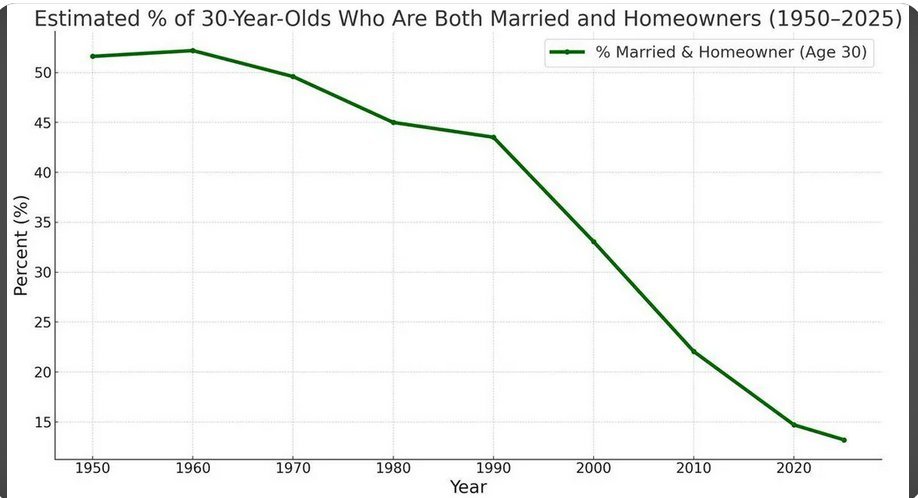
From 52% in 1950 to 13% today. A shameful indictment of our country’s trajectory.
Despite stocks near record highs, all is not well beneath the surface.
This is not a market where I want to be in overpriced stocks. I want plenty of exposure to precious metals and miners. And cheap emerging market stocks with fat yields, like Brazil.
Of course, I do have some exposure to U.S. markets, mostly through retirement accounts. But during times like these, I want to hedge that exposure with alternative investments.
Because when crashes happen, the hottest stocks get hit the hardest. And based on everything I’m seeing, we’re overdue.
Remember that in mid-2022, markets were falling sharply. The Nasdaq 100 had dropped about 33% from its highs in late 2021.
In November of 2022, OpenAI released ChatGPT, giving birth to the AI bubble. Since then the Nasdaq 100 is up 130%. AI saved the stock market, for a while at least.
If investors begin to lose faith in the AI story, it could spell trouble. When we add in the economic signals above, I’m maintaining a bearish outlook.


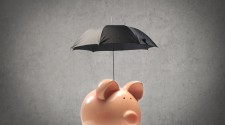
Comments: